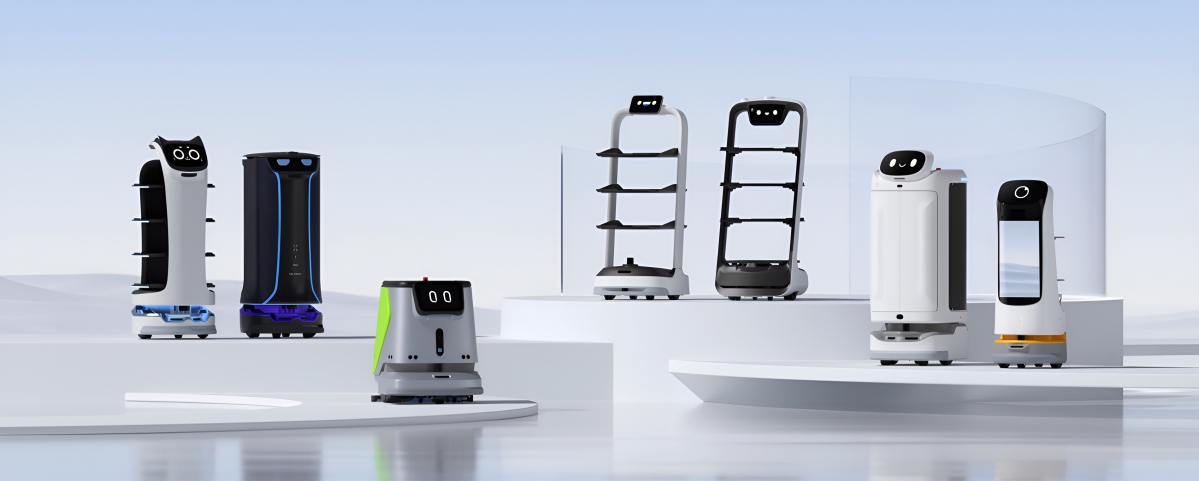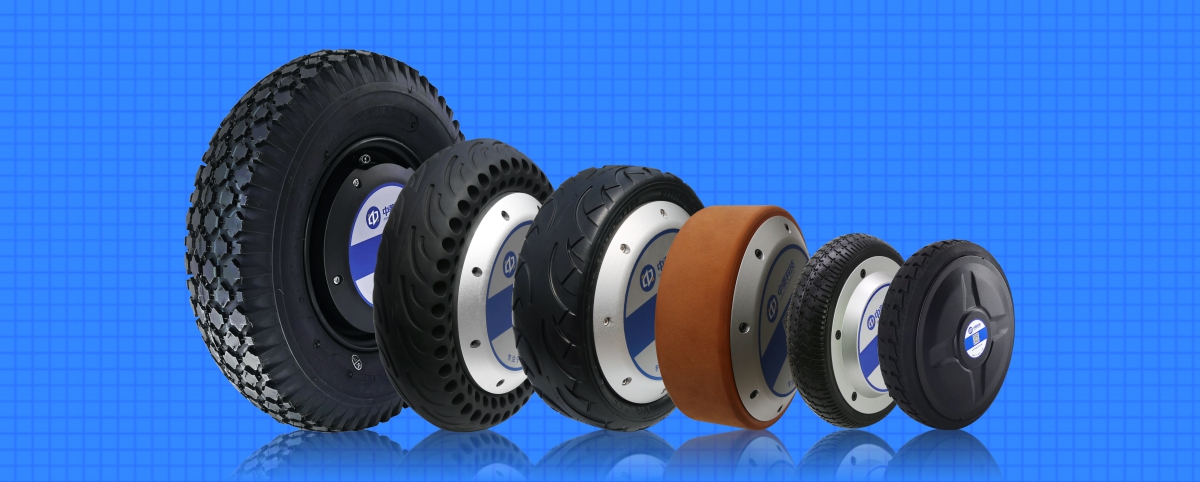With the rapid progress of technology and the improvement of human living standards, the service robot industry has experienced unprecedented rapid development. The hub motor, which serves as the power source for service robots, has also been favored by the market. Under the urging of the market, the technology of hub motors has also been greatly improved and advanced, and its advantages and disadvantages are also obvious.
As a new type of driving technology, hub motor mainly operates based on permanent magnet synchronous motor technology and has the following advantages:
Higher transmission efficiency: The hub motor can directly drive the service robot, eliminating the need for energy loss in traditional transmission systems, resulting in higher efficiency and energy utilization.
Simple and compact structure: The high integration of hub motors eliminates the need for traditional servo motors, reducers, and other transmission systems for service robots, greatly reducing their weight and size.
Easy installation: The structure of the hub motor is compact and simple, making it easy to install on robots, avoiding the problems of traditional robot transmission systems occupying space and installation difficulty.
Flexible driving mode: Because the hub motor has the characteristic of being able to drive a single wheel independently, whether it is front wheel drive, rear wheel drive, four-wheel drive, or even six wheel drive, it can be easily achieved. On many outdoor delivery robots, four-wheel drive and six wheel drive are common cases.
Suitable for service-oriented robots: The hub motor is suitable for various service-oriented robots, such as food delivery robots, handling robots, delivery robots, cleaning robots, inspection robots, etc.
However, hub motors also have some obvious drawbacks:
High cost: The hub motor has high integration and requires materials with high requirements such as heat resistance, high torque, and high precision, resulting in high costs.
High difficulty maintenance: Due to the complex internal structure of the hub motor, once damaged, the entire motor may need to be replaced or repaired, making maintenance work difficult and costly.
Limited electric braking performance: The electric braking capacity of the hub motor is small, which cannot meet the requirements of the overall mechanical braking performance, requiring an additional mechanical braking system, and designing a mechanical braking system is difficult.
Poor environmental adaptability: When the hub motor is affected by water, dust, and other factors, it is prone to problems, and there are also strict requirements for sealing. In addition, during the design process, it is also necessary to pay special attention to the issue of heat dissipation for the hub motor.
Braking heat and energy consumption issues: The motor itself generates heat, and due to the increase in unsprung mass, the braking pressure and heat generation are greater. Such concentrated heat generation requires higher braking performance.
Shenzhen Zhongling Technology has been focusing on the wheel hub motor industry for many years, integrating production, research and development, and sales. Wheel hub motors range from 2.5-16 inches, 50-1000W, 24-48V, and 50-500kg in load capacity, with a variety of styles and support for various customization projects, tailoring various types of wheel hub motors for robots in special working environments, so that robots can work well. ZLTECH has contributed significantly to the development of the wheel hub motor industry and the robotics industry.
Post time: Apr-08-2024


